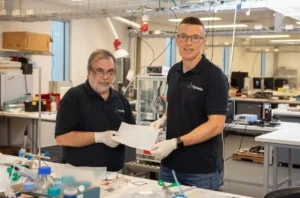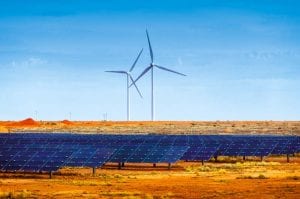There has been a lot of talk about clean and green hydrogen in recent months. They’re not the same thing.
The Prime Minister spruiked hydrogen in his ‘Australian way’ brochure to achieve net-zero emissions by 2050. “Key to this approach is investment in new energy technologies, like hydrogen and low cost solar, to ensure our manufacturing, resources, agricultural and transport sectors can secure their future, especially in rural and regional areas”, said Scott Morrison on 26 October 2021.
But just like ‘oils ain’t oils’ not all hydrogen is the same.
The name hydrogen comes from the Greek words “hydro” (meaning water) and “genes” (meaning creator). It was named by French chemist Antoine Lavoisier because when it burns, water is produced.
When made with renewable energy, so-called ‘green hydrogen’ enables the production of low-carbon, high-value goods such as ‘green’ steel, fertiliser, and ammonia.
Hydrogen can be made from fossil fuels which contributes to global warming or it can be made from renewable energy and water using an electrolyser producing zero carbon emissions. It is critically important that we can tell the difference and prevent greenwashing.
In December 2020, Hydrogen Australia (a division of the Smart Energy Council) launched its Zero Carbon Certification Scheme for renewable hydrogen, renewable ammonia and renewable metals – a world leading scheme to provide a guarantee of origin for hydrogen produced from 100 percent renewable energy and with zero carbon emissions.
Importantly, the Zero Carbon Certification Scheme does not include hydrogen made from fossil gas or coal and using carbon capture and storage – a production method which former prime minister Malcolm Turnbull, now chair of Fortescue Future Industries, describes “a con”.
The Zero Carbon Certification Scheme is backed by some of the biggest renewable hydrogen companies in the world, the German Energy Agency, State Governments of Victoria, Western Australia and Queensland, and the Australian Capital Territory.
Indeed, Canberra is at the forefront of this work. The first project being certified under the scheme is the ActewAGL renewable hydrogen refuelling station in Fyshwick.
Leading environmental consulting firm Point Advisory was appointed to undertake an audit of plant and equipment to verify that it is using 100 percent renewable electricity from the ACT grid and assess any and all greenhouse gas emissions associated with the production of hydrogen fuel at Fyshwick.
ActewAGL CEO, John Knox, says: “Achieving certification provides certainty to our customers that their vehicles are running on green hydrogen.”
Point Advisory concluded that by using 100% renewable electricity from the ACT grid and potable water from the mains, the ActewAGL refueling station can produce up to 7,884 kilograms of renewable hydrogen each year.
The electricity supplied to the facility from the ACT grid is renewable – supplied from dedicated renewable energy generation, solar PV, existing green power generation and renewable energy certificates – all arranged by the ACT Government.
Any emissions from the storage of potable water are extremely small. “The embedded carbon is de minimis,” said auditor Simon Dawes. That’s Latin for bugger all.
A certificate verifying the facility is producing renewable hydrogen will today be presented to ActewAGL, with the certification remaining in place for 12 months, when a simpler verification audit will check operations to enable continuing certification.
The refuelling station will provide certified green hydrogen to the public, and specifically supply the ACT Government and its Hyundai government cars. The refuelling station received funding support from Hornsdale Wind Farm 3, a subsidiary of Neoen, which was successful in the ACT Government’s reverse auction for renewable energy in 2016.
The refuelling station will provide certified green hydrogen to the public, and specifically supply the ACT Government and its Hyundai government cars.
Shane Rattenbury, ACT Minister for Climate Change and Sustainability, has made it clear renewable hydrogen is the only hydrogen that should be produced in Australia and certification is critical in ensuring we can track how these products are manufactured so customers can be certain the product they select is genuinely zero emissions.
The ACT really is a world leader in renewable hydrogen and in the certification of renewable hydrogen. That’s something we should all be proud of.
Hydrogen Australia is now undertaking a pre-certification of the Yara International green ammonia plant in the Pilbara, Western Australia. The project has received funding from ARENA and the WA Government and will be one of the world’s first to produce green ammonia at an industrial scale.
“The initiative will guarantee our customers that the quantities supplied have been produced according to set standards and will inform them about key attributes such as renewable origin and greenhouse gas footprint,” said Emile Herben, project manager at Yara International.
Scott Hamilton is a senior advisor at Hydrogen Australia (a division of Smart Energy Council). Simon Dawes is a senior manager at Point Advisory.










